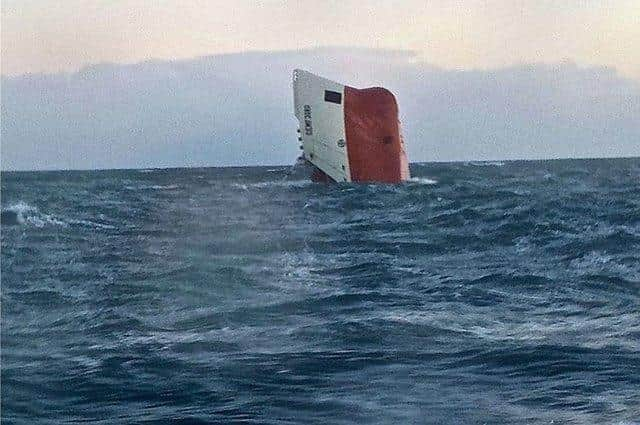Cemfjord disaster: Sheriff to probe death of eight sailors in Pentland Firth tragedy
No details of the date or location for the FAI have been announced by the Crown Office and Procurator Fiscal Service (COPFS), which has been roundly criticised for delays in other inquiries.
The Cemfjord went down in violent weather in the Pentland Firth between Orkney and mainland Scotland in January 2015.
Advertisement
Hide AdAdvertisement
Hide AdThe Firth is notorious for unpredictable seas and the Cemfjord sank without time to issue a Mayday on a ‘routine’ run from Rordal in Denmark to Runcorn in Cheshire


She was found with her bows vertically out of the water by the crew of a Northlink ferry the day after her bridge’s last known communications. Despite a massive air and sea rescue effort no sign was ever found of the seven Polish and one Filipino crewman. The 272ft wreck was later declared a ‘sea grave’.
An inquiry by the Marine Accident Investigation Branch (MAIB) later determined that the sinking of the Cyprus-registered cement carrier could have been avoided if the master had sought shelter.
It also said the master's decision was "probably influenced by actual or perceived commercial pressures".
The MAIB said the sea conditions were "extraordinarily violent" and confirmed the vessel was swamped so rapidly by the waves there would have been no time to issue a distress message or escape. It also found a number of “significant safety deficiencies”.
The COPFS has confirmed that all investigations into the loss of the Cemfjord have been completed and final preparation work is underway ahead of an FAI at a yet to be decided date.
It has been criticised for delays in holding a number of FAIs into the deaths of seamen, particularly those who come from abroad.
Prosecutors have already apologised for taking 10 years to conclude the probe into the death of Stanislaw Bania, a 58-year-old able seaman from Gdynia in Poland, who plunged into the River Clyde from a ship unloading at Glasgow’s King George V Docks in 2010.
Advertisement
Hide AdAdvertisement
Hide AdIn March of last year, Sheriff Frances McCartney said her inquiry into the death of Polish seaman Boguslaw Kopec, 46, a decade after he died in an accident off Jura in the Inner Hebrides had “a significant impact on the availability of evidence."
And just last month, Sheriff Ian Wallace condemned the near decade it took to rule on the death of Croatian seaman Pjero Kirida, 29, who died following an accident near Aberdeen Harbour in June 2012.
A spokesman for the National Union of Rail, Maritime and Transport Workers said: ”To take seven years to announce an inquiry into the Cemfjord tragedy is appalling. An investigation by the Marine Accident Investigation Branch found that commercial pressures had played a role in the loss of the Cemfjord.
“So you wonder, after all this time, what is the point of a FAI?”
A Crown Office spokesperson said: ”The COPFS investigation into the deaths of the eight seamen in the Pentland Firth in 2015 is complete and work is ongoing in preparation for the holding of a Fatal Accident Inquiry.”